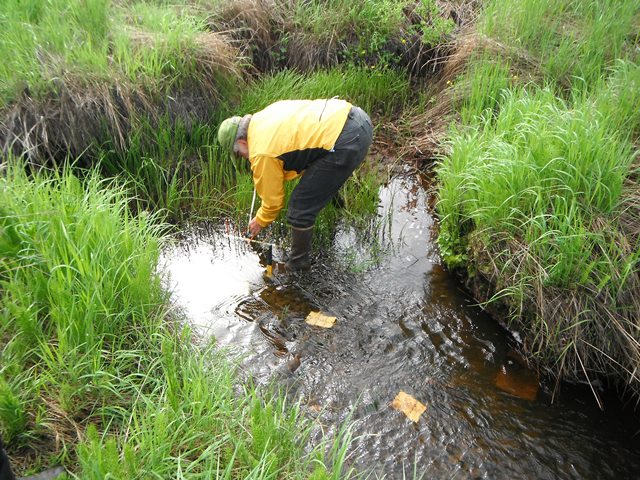by Joe Dawson

In Alaska, fish mean serious money. For fishermen, landowners, and the government, learning all they can about the lives of salmon could pay off in future fish harvests. There’s a lot to learn, down to how a single type of tree impacts their habitat.
The story of those habitats and trees, the alders, has been explored by SERC senior scientist Dennis Whigham and colleagues in a new study published May in Science of the Total Environment. The researchers have been studying interactions between watersheds and headwater streams for almost two decades.
Alders are most recognizable for their egg-shaped, serrated leaves. Their bark is used for tanning leather, and their wood to smoke salmon and make Fender guitars. But alders also have an outsized effect on their natural environment, transforming the chemistry and structure of wetlands and streams nearby. Bacteria in alder roots make nitrogen, an important plant nutrient, available in places where it is otherwise scarce. This can send ripple effects through entire ecosystems. In another plot twist, scientists also expect alder trees to expand northward, stirred by warmer temperatures and higher carbon dioxide from climate change. Whigham’s findings highlight the interconnectedness of wetland ecosystems, waterways, and the valuable fish that call Alaska home.
“There is this strong connection between land and stream and between the fish and the stream,” Whigham said.
